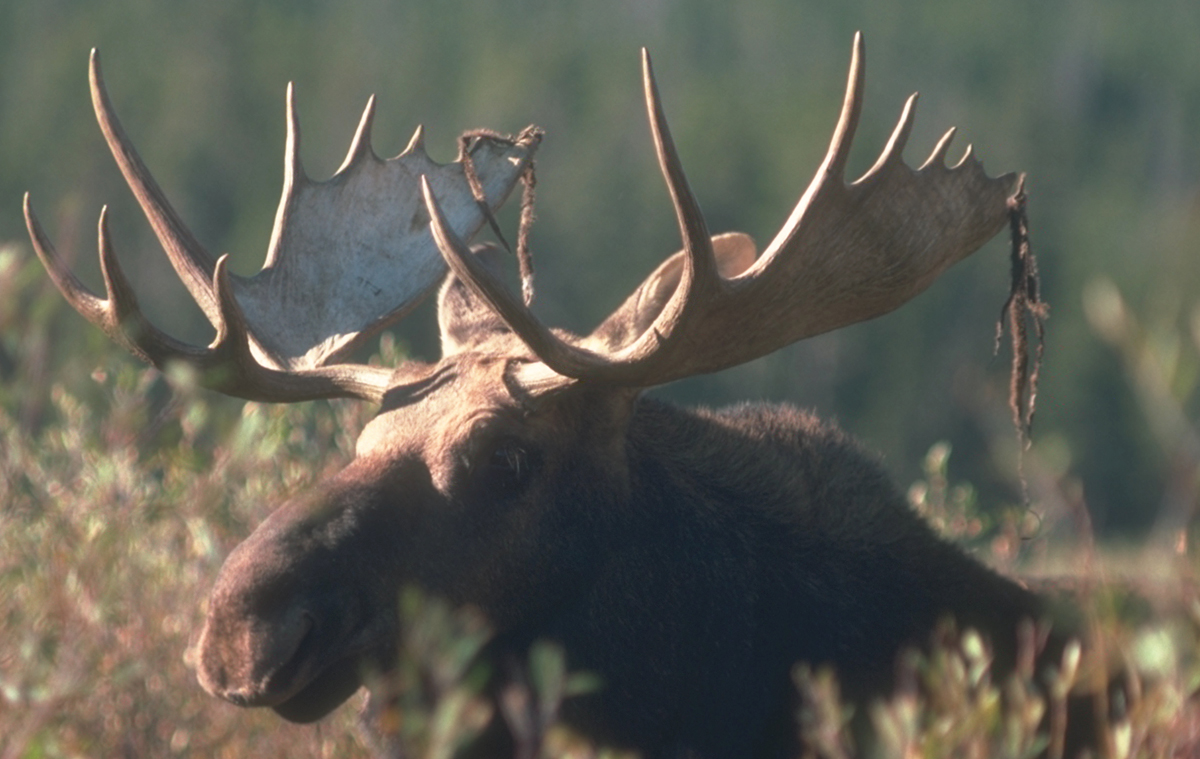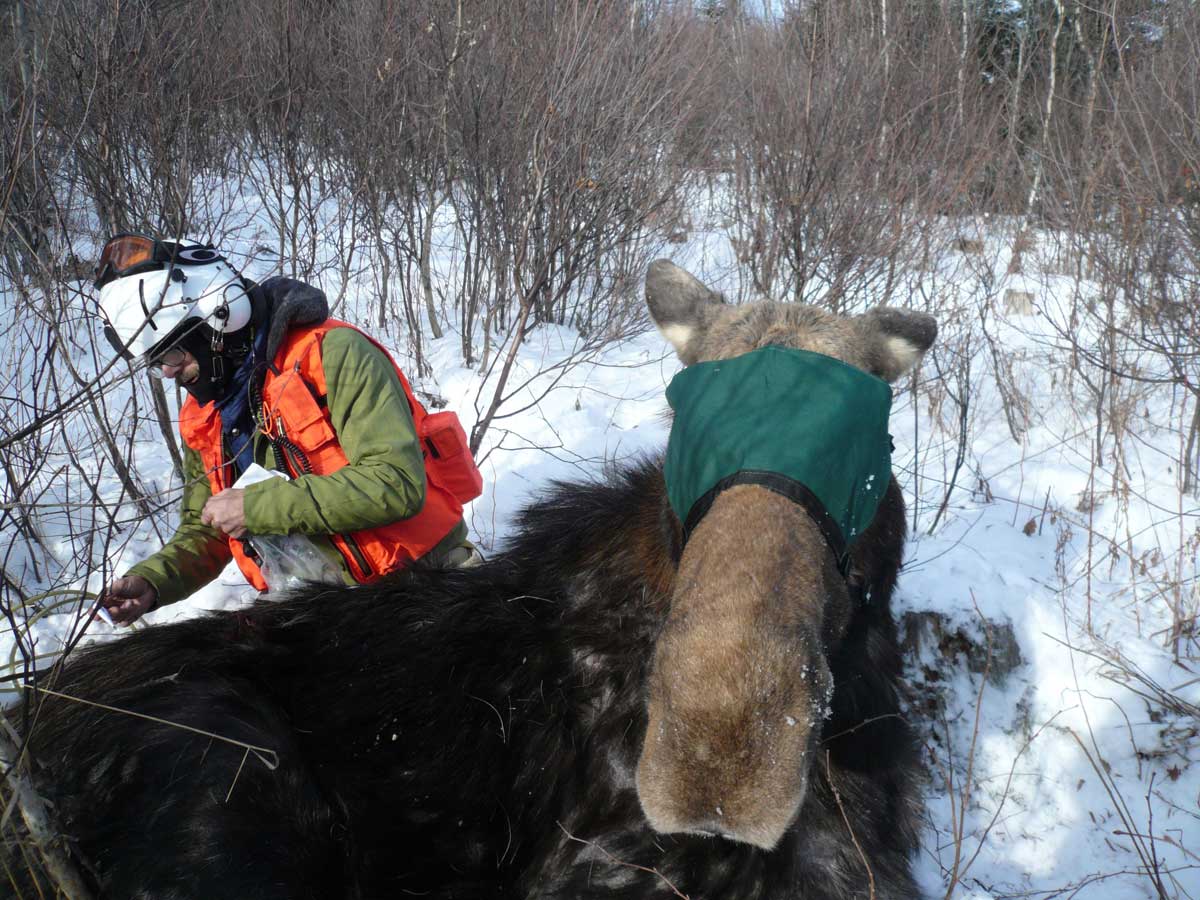Collaring Complete For Third Year Of NH Moose Study
 A helicopter capture crew has completed the work of collaring additional moose for the third year of a study being undertaken by the New Hampshire Fish and Game Department in partnership with the University of New Hampshire (UNH).
A helicopter capture crew has completed the work of collaring additional moose for the third year of a study being undertaken by the New Hampshire Fish and Game Department in partnership with the University of New Hampshire (UNH).
NH Fish and Game moose biologist Kristine Rines reports that 45 additional moose were collared this January – 36 calves and 9 cows. The current moose mortality study in northern New Hampshire began in 2014 and will continue for a total of six years.
The capture crew from a company called Native Range (of Elko, Nevada) used net-guns and tranquilizer darts to capture the moose so that they could be collared. Blood and other samples were collected during collaring to help evaluate the health of the moose. Earlier in January the same crew collared 107 moose in Maine for a similar study; they were headed off next to collar moose in New York.
The collared animals in New Hampshire will be monitored for as long as the collars keep transmitting. Graduate students from UNH track the moose, documenting how long the individual moose live. When a moose dies, the collars transmit a special signal, allowing researchers to find the moose as soon as possible to determine the cause of death.
 “When this study is done, we will have collected several years of information on calf moose mortality and how that is affected by differing tick loads and moose densities, as well as multiple years of information on adult mortality,” explained Rines. “We hope that this data, coupled with that coming out of Maine, will help us determine the weather patterns and moose densities that lead to increased tick mortality.”
“When this study is done, we will have collected several years of information on calf moose mortality and how that is affected by differing tick loads and moose densities, as well as multiple years of information on adult mortality,” explained Rines. “We hope that this data, coupled with that coming out of Maine, will help us determine the weather patterns and moose densities that lead to increased tick mortality.”
Approximately 45 moose cows and calves were collared in New Hampshire during the first year of the current study (2014), and researchers recorded 64% mortality for moose calves and 5% mortality for adult cow moose. In 2015, 44 additional cows and calves were collared. That year, 74% of calves and 5% of adults died because of winter tick. This year’s collaring will allow NH Fish and Game to maintain monitoring of 53 adult cows (9 collared this year and the remaining alive from previous collaring’s) and 36 calves.
“It's clear that we need to learn more about the causes of moose mortality and how our changing weather patterns and different moose densities may be affecting both the causes and rates of mortality in our moose herd,” said Rines. “What we learn will help our moose management team anticipate and respond to changing moose mortality and productivity.” A similar study was conducted in New Hampshire from 2001-2006.
“While regional moose populations are indeed facing some serious threats, moose are not on the verge of disappearing from the New Hampshire landscape,” said Rines. “We are hopeful that a combination of research and management efforts will allow us to do all we can to understand what the future holds for Granite State moose.”

